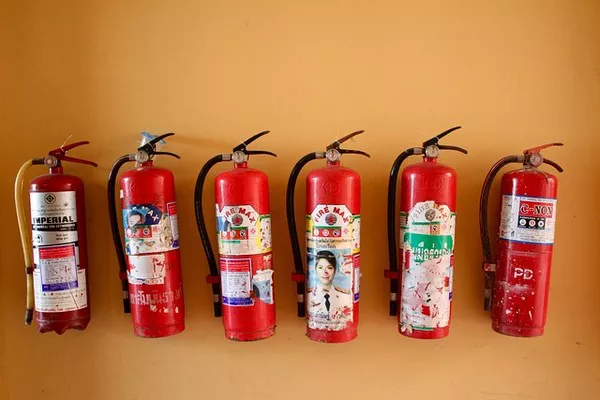Fire extinguishers are vital safety devices that can prevent small fires from escalating into destructive blazes. Among the various classes of fire extinguishers, Class D extinguishers are specifically designed to combat fires involving combustible metals. This article delves into the composition, function, types, and application of Class D fire extinguishers, as well as their importance in fire safety protocols.
What is a Class D Fire Extinguisher?
1. Definition and Classification
Class D fire extinguishers are specifically designed to extinguish fires that involve combustible metals, which include materials such as magnesium, titanium, sodium, lithium, and potassium. These metals can ignite and burn at extremely high temperatures, often reacting violently with water and air, making conventional extinguishing methods ineffective or dangerous.
2. Combustible Metals
Understanding the types of metals that fall under Class D is crucial:
Magnesium: Used in aerospace and automotive industries.
Titanium: Commonly found in aerospace, medical devices, and sporting goods.
Sodium: Often used in chemical manufacturing and as a heat exchanger in nuclear reactors.
Lithium: Found in batteries and various industrial applications.
Potassium: Used in fertilizers and various chemical processes.
How Class D Fire Extinguishers Work
1. Mechanism of Action
Class D extinguishers operate on the principle of smothering and cooling. They do not use water or foam, which can exacerbate fires involving combustible metals. Instead, they rely on specialized dry powder agents that interrupt the chemical reaction of combustion.
2. Types of Extinguishing Agents
The primary agents used in Class D fire extinguishers include:
Sodium Chloride (NaCl): Effective for sodium fires; it forms a crust that helps smother the flames.
Potassium Chloride (KCl): Works similarly to sodium chloride and is used for various combustible metal fires.
Copper Powder: Often used for extinguishing magnesium fires.
Other Metal Powders: These can include various proprietary blends designed for specific metal fires.
Components of a Class D Fire Extinguisher
1. Cylinder
The cylinder is typically made from robust materials to withstand high pressures. It is designed to contain the dry powder agent safely until it is needed.
2. Nozzle
The nozzle of a Class D extinguisher is specially designed to allow for the controlled dispersion of the dry powder. It helps direct the agent onto the fire while minimizing the risk of spreading burning material.
3. Safety Features
Class D extinguishers include safety features such as:
Pressure Relief Valve: Prevents over-pressurization of the cylinder.
Operating Instructions: Clearly marked instructions on how to use the extinguisher effectively.
Application and Usage
1. Situations Requiring Class D Extinguishers
Class D fire extinguishers are essential in environments where combustible metals are present, including:
Manufacturing Facilities: Industries that work with metals, such as aerospace, automotive, and electronics.
Laboratories: Chemical and research laboratories that handle reactive metals.
Maintenance Shops: Areas where metals are machined or processed.
2. Proper Use of Class D Fire Extinguishers
To effectively use a Class D fire extinguisher, follow these steps:
Assess the Situation: Ensure you can safely approach the fire. If it’s too large or spreading, evacuate and call emergency services.
Activate the Extinguisher: Pull the safety pin or seal, if applicable.
Aim at the Base of the Fire: Direct the powder toward the burning material, avoiding spreading the fire.
Sweep the Nozzle: Use a side-to-side motion to cover the fire with the powder thoroughly.
3. Limitations
While Class D extinguishers are effective for combustible metals, they have limitations:
Not Suitable for Other Classes of Fires: They should not be used on fires involving flammable liquids, electrical equipment, or ordinary combustibles unless specifically labeled.
Training Required: Users should be trained to understand the risks associated with metal fires and the appropriate usage of Class D extinguishers.
Maintenance and Inspection
1. Regular Inspections
Class D fire extinguishers must be inspected regularly to ensure they are in working condition. This includes:
Checking the pressure gauge.
Inspecting for physical damage or corrosion.
Ensuring the nozzle is clear and unobstructed.
2. Professional Servicing
Annual servicing by a certified professional is essential. This includes:
Weighing the extinguisher to ensure it is still full.
Testing the extinguishing agent for efficacy.
Recharging or replacing the extinguisher if needed.
Importance of Class D Fire Extinguishers in Fire Safety
1. Protecting Lives and Property
Class D fire extinguishers play a critical role in preventing catastrophic incidents in environments where combustible metals are handled. Properly used, they can protect both lives and property from severe fire damage.
2. Regulatory Compliance
Many industries handling combustible metals are required by law to have appropriate fire safety measures in place, including Class D extinguishers. Compliance with safety regulations not only protects workers but also reduces liability for businesses.
3. Fire Safety Training
Employers should provide comprehensive training on the use of Class D extinguishers as part of their fire safety protocols. Understanding how to use these extinguishers effectively can make a significant difference in emergency situations.
Conclusion
Class D fire extinguishers are specialized tools designed to combat fires involving combustible metals, which can pose unique and dangerous challenges. Understanding the composition, operation, and application of these extinguishers is essential for ensuring safety in environments where these materials are present. Regular maintenance, training, and awareness are vital components of an effective fire safety strategy, helping to mitigate risks and protect both lives and property.
Related topics:

